CHRONIC AND INFECTIOUS DISEASES




DON’T WAIT, VACCINATE! A Guide to Immunization for First Nations, Inuit and Métis Peoples and Communities
Inner Cover Photo © Credit: iStockPhoto.com, ID 1199770072

© 2022 National Collaborating Centre for Indigenous Health (NCCIH) and the National Collaborating Centre for Infectious Diseases (NCCID). This publication was funded by the NCCIH and made possible through a financial contribution from the Public Health Agency of Canada (PHAC). The views expressed herein do not necessarily represent the views of PHAC.
This booklet was produced by the National Collaborating Centre for Indigenous Health (NCCIH) and the National Collaborating Centre for Infectious Diseases (NCCID). The information presented in this booklet was adapted from Don’t Wait, Vaccinate! A Guide to Immunization for First Nations, Inuit and Métis Peoples and Communities, 2012 with permission from First Nations Inuit Health Branch, Indigenous Services Canada.
View and download the fact sheet series and other resources supporting vaccine confidence amongst First Nations, Inuit and Métis peoples and communities online at: nccih.ca and nccid.ca .
To learn more about vaccines for children, youth and adults, visit your local health centre or go to: www.canada.ca/en/public-health/ services/immunization-vaccines.html
All NCCIH materials are available free of charge and can be reproduced in whole or in part with appropriate attribution and citation. All NCCIH materials are to be used solely for non-commercial purposes. To help us measure the impact of these materials, please inform us of their use.
Citation: National Collaborating Centre for Indigenous Health (NCCIH) & National Collaborating Centre for Infectious Diseases (NCCID). (2022). Don’t wait, vaccinate! A guide to immunization for First Nations, Inuit and Métis Peoples and communities.

La version française est également disponible sur les sites Web ccnsa.ca et ccnmi.ca sous le titre : N’attendez pas, vaccinez! Un guide sur la vaccination à l’intention des peuples et des communautés des Premières Nations, inuits et métis.


For further information or to obtain additional copies, please contact:
National Collaborating Centre for Indigenous Health (NCCIH)

3333 University Way Prince George, British Columbia V2N 4Z9 Canada
Tel: (250) 960-5250 Fax: (250) 960-5644 Email: nccih@unbc.ca
Download publications at nccih.ca/34/Publication_Search.nccih
Télécharger des publications à ccnsa.ca/524/Recherche_de_publication.nccih
Front and Back Cover Photo © Credit: iStockPhoto.com, ID 480567445
CONTENTS
VACCINES OFFER GOOD PROTECTION 4
WHAT IS A VACCINE? 4 VACCINES ARE SAFE 5 GERMS ARE NATURALLY AROUND US 5
IMMUNIZATIONS ARE STILL NEEDED TODAY 6
IMMUNIZATION IS CRITICAL FOR GOOD HEALTH 6
PROTECTING FIRST NATIONS, INUIT AND MÉTIS

CHILDREN, FAMILIES AND COMMUNITIES 6
WHERE DO WE GO TO BE VACCINATED? 7 WHEN SHOULD WE GET OUR VACCINES? 7 WHAT IS AN IMMUNIZATION SCHEDULE? 7
IT’S IMMUNIZATION TIME! WHAT SHOULD WE EXPECT? 8 HOW CAN I HELP MY CHILDREN? 8
WHAT ABOUT YOUTH AND ADULTS? 8 IS THERE ANY CHANCE OF HAVING AN ALLERGIC REACTION TO VACCINES? 8 WHAT KIND OF REACTIONS CAN I EXPECT? 9 WHEN TO GET HELP 9
HOW DO WE REMEMBER WHICH VACCINES
WE HAD AND WHICH ONES WE NEED? 10
QUICK CHECKLIST FOR YOUR CHILDREN’S IMMUNIZATIONS 11 YOUR COMMUNITY AND IMMUNIZATION 12 HEALTHIER AND STRONGER COMMUNITIES 12
WHAT VACCINES ARE RECOMMENDED FOR MY CHILDREN? 13 IS THERE MORE INFORMATION OUT THERE? 23
It is important to have a good understanding about recommended vaccines. This booklet provides accurate information about:
• How vaccines work to protect children, youth and adults
• Germs, getting vaccinated and possible side effects
• When and where to get immunized and how to keep track of your vaccinations
• Your community and vaccination
DID YOU KNOW?
Vaccination and immunization mean the same thing.
Don’t wait, vaccinate! A Guide to Immunization for First Nations, Inuit and Métis Peoples and Communities
3
Vaccines offer good protection
First Nations, Inuit and Métis Elders share knowledge of ‘good medicines’ that have been used for generations to prevent sickness and heal people who are sick. Many of these medicines are still used today.
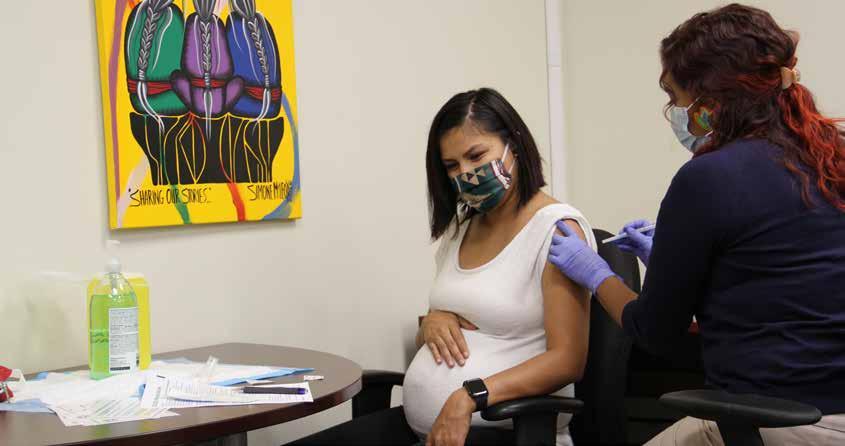
Vaccines are also good medicine. They help protect children, youth and adults from many contagious diseases, at any age and any stage of life.
What is a vaccine?
Different vaccines protect people from getting different diseases, such as diphtheria and measles, which can be very serious or even deadly.
The body’s immune system is a network of organs, cells and tissues that all work together to protect the body against disease. When new germs enter your body, the immune system makes special proteins called antibodies to fight the germs, but the germs can still make you sick. Vaccines help your immune system make antibodies to fight specific diseases, without getting the disease itself. Vaccines also keep you from getting severely sick if you are exposed to the disease germs again in the future.
© Credit: iStockPhoto.com, ID 1318036364
 © Credit: Tina Campbell
© Credit: Tina Campbell
Vaccines are safe
Vaccines are safe and effective. Canada has strict processes to approve and monitor vaccines and how they are used. Even after lengthy and careful testing to make sure vaccines are safe, vaccines are checked regularly to make sure they are still safe and effective to protect against disease. Part of monitoring their safety includes keeping track of any side effects or reactions.
Germs are naturally around us
Every day, we are exposed to germs, whether from children playing at daycare or school, visiting friends, going to appointments in the community, or attending a cultural event or community feast.
The dangers of getting sick from vaccine-preventable diseases are much greater than the risks of getting the vaccine.
Some germs can spread very easily and quickly. Coughing, sneezing or simply talking or singing are some of the ways germs can spread from one person to the next. Germs also spread when people touch something that is contaminated by the germs, and then touch their eyes, nose or mouth.

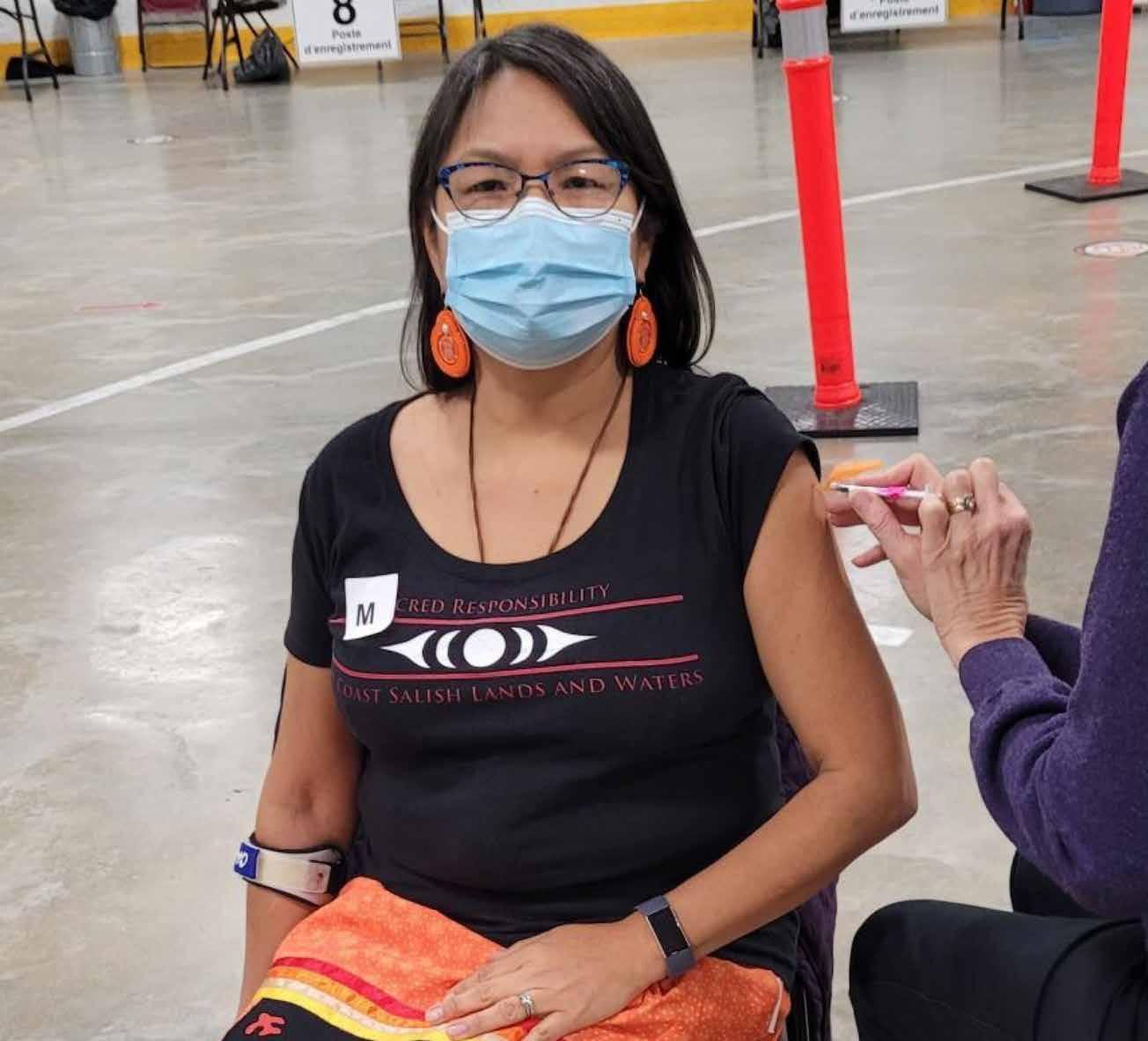
Germs can live for hours or days on all kinds of surfaces, like doorknobs and handles, toys and electronic devices, desks and countertops, light switches and elevator buttons, and purses and backpacks. Fortunately, most germs are harmless because people’s immune systems work to fight them off.
Some germs cause diseases that can be very serious and may even lead to death. It is important for children, youth and adults to get immunized on time so their immune systems are ready to fight off these serious diseases. Starting vaccines at a young age will protect children during early childhood and throughout their lives.
DID YOU KNOW?
Vaccinations are not for just children and youth. Adults also need to get vaccinated to boost their protection against some diseases, such as tetanus, and to build immunity against other diseases that are more common in adults, such as shingles.
5
Don’t wait, vaccinate! A Guide to Immunization for First Nations, Inuit and Métis Peoples and Communities
© Credit: Annette Cristo
Immunizations are still needed today
Over the last 60 years, vaccines have saved more babies’ and children’s lives than any other medical intervention. Vaccines have helped stop the spread of many diseases and some diseases – like polio and diphtheria–have almost completely disappeared in Canada.
If people do not get immunized, vaccine-preventable diseases will become more common again. Getting immunized helps to keep these diseases under control for everyone – for good.
Immunization is critical for good health
Immunization is an important part of staying healthy. Learning the facts about vaccines and immunization can help parents, caregivers and other adults make good decisions to protect children, youth, themselves and their communities.
Protecting First Nations, Inuit and Métis children, families and communities

Children have a special place in First Nations, Inuit and Métis communities. They make families stronger and communities whole. Elders say that each child carries a special gift that they will use when they grow to be the caregivers, leaders and visionaries of their communities.

For this reason, parents, caregivers and other adults are responsible for the safety and well-being of their children. Part of this responsibility is to protect children, youth, themselves and their communities from vaccine-preventable diseases and illnesses by getting vaccinated.
DID YOU KNOW?
Immunization is the best and most effective way to protect against certain diseases at any age and any stage of life. Keep your children, families and communities safe, healthy and strong!
6
Credit:
1219675342
©
iStockPhoto.com, ID
Where do we go to be vaccinated?
Parents and caregivers are responsible for their children’s health. It is important for parents and caregivers to know when and where to get their children vaccinated. Where you go to get vaccinated depends on where you live – on reserve, in a city or town, or in a rural or remote northern community.
Talk to a nurse, doctor, or local health care provider in your community. You can also contact your provincial or territorial public health department to find out where you can go for your vaccines.

When should we get our vaccines?
Timing is very important when it comes to immunization. Vaccines work best when given on time, beginning when babies are still very young. Babies are most vulnerable to diseases under the age of 2 years.
Many vaccines are recommended in childhood to offer protection from a wide range of diseases. Some vaccines only protect for a certain number of years. Teenagers and adults need booster shots for some vaccines to continue to be protected. Some diseases only affect older children or adults (like HPV and shingles). Those vaccines may be offered at different life stages.
Teens and adults can get vaccine-preventable diseases if they missed some vaccines when they were children. Talk to your health care provider to make sure you are up to date with your vaccines. Having all your vaccines helps to keep you, your family and community healthy.
What is an immunization schedule?
A routine immunization schedule shows which vaccines are recommended, and at what age. There are schedules for infants, children, teens and adults. Following the schedules will make sure that everyone gets the most benefit from recommended vaccines. The immunization schedule in your province or territory will ensure that children are protected from diseases, as soon as possible.
Some vaccines require more than one dose, or a booster may be needed as people get older. It is important for children, youth and adults to receive their vaccines on time to be fully protected.
Talk to your nurse or health care provider for the immunization schedule for you and your children that applies to where you live.
DID YOU KNOW?
Most children, youth and adults can be vaccinated, even if they have a cold or mild fever.
Don’t wait, vaccinate! A Guide to Immunization for First Nations, Inuit and Métis Peoples and Communities
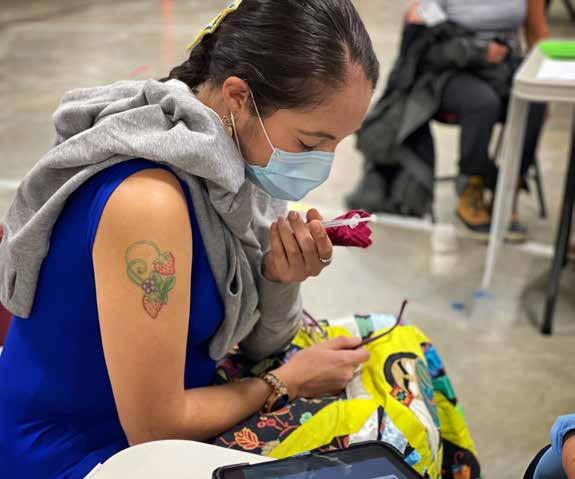
7
© Credit: Melanie Laquerre
Understanding what will happen when you and your family get a vaccine will make the experience easier. Your nurse or health care provider will start by asking a few questions about your child’s health, or your health if you are getting immunized. Be sure to talk about any illnesses or allergies you have. Ask your health care provider any questions so you know what to expect before, during and after immunization.
How can I help my children?
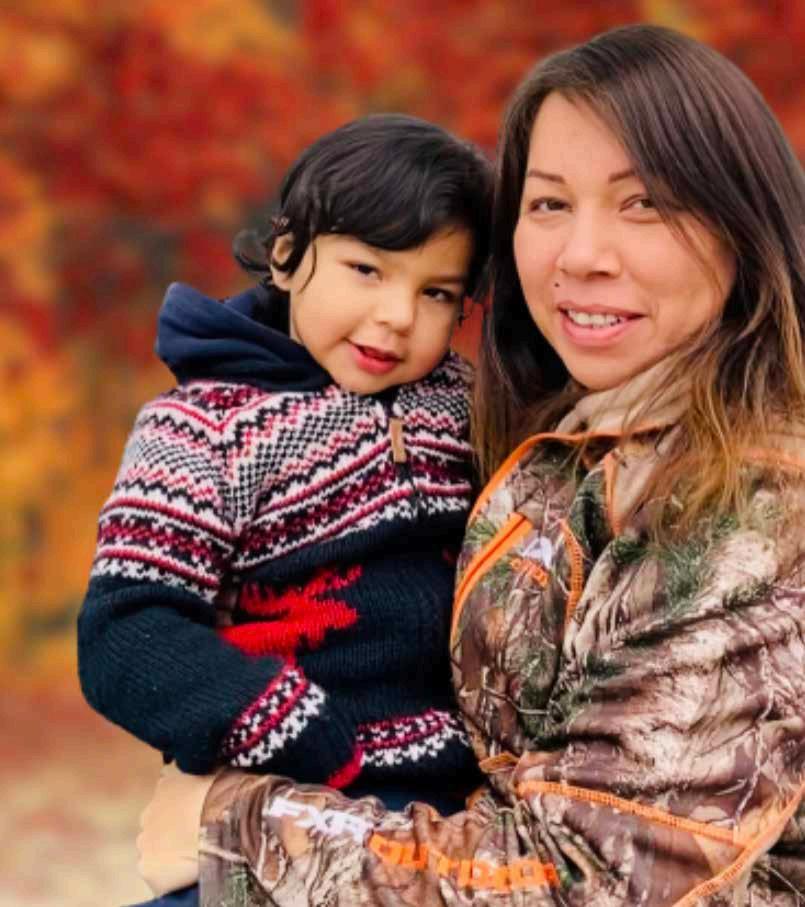
Children notice how their parents or caregivers are feeling. If you are anxious or nervous about getting vaccinated, your children may feel this. Staying calm and touching, talking, singing or cuddling with your children during a vaccination will help to make the experience more comfortable for them – and you. Distracting your children with toys, videos or stories also will help to reduce any pain and distress.
What about youth and adults?
Many young people and adults feel nervous about getting immunized. Fear of needles or pain can make many people stressed or anxious. Sitting up straight, taking slow deep breaths, looking away, and relaxing the muscles in the arm that is getting the vaccine can help you to be calm before, during and after immunization.
Listening to music, singing, reading or talking to someone else may also help to distract you. Talk to your nurse or health care provider about any ointments or other pain relief.
Is there any chance of having an allergic reaction to vaccines?
As with anything that is taken into the body, there is a slight chance of an allergic reaction. This is why you will be asked to wait for 15 minutes after being immunized, before leaving the health care provider’s office, clinic or public health office. Later, you should contact your nurse or health care provider right away if you or your children have problems breathing (wheezing noise), if your skin gets red and blotchy (hives), or anything else unusual happens after being immunized. Health care providers will know what to do to help.
8
It’s immunization time!
What should we expect?
© Credit: Hannah Desmoulin
What kind of reactions can I expect?
Serious side effects from vaccination are very rare. Most people feel fine after being vaccinated, but some people may feel mild side effects such as:
• Feeling cranky or sleepy (more than usual)
• Having a low fever
• Developing a sore red spot or a small amount of swelling in the area of the injection site
• Having soreness in the vaccinated arm for a few days
These symptoms are common and do not last for longer than a day or two, at the most. Before you leave your health care provider’s office or public health office, ask your nurse or health care provider what you can do to ease any soreness or discomfort from the vaccination.
When to get help
While serious side effects from immunization are very rare, they do occur. Contact your nurse, doctor or health care provider right away if you notice any of these symptoms:
• Fever over 40°C or 104°F
• Seizure or convulsions – this is often related to a very high fever
• For babies and small children – Crying or fussing for more than 24 hours
• Swelling and redness at the injection site that is getting worse
• Unusually sleepy or unresponsive
• If you sense that something isn’t right after an immunization
Don’t wait, vaccinate! A Guide to Immunization for First Nations, Inuit and Métis Peoples and Communities
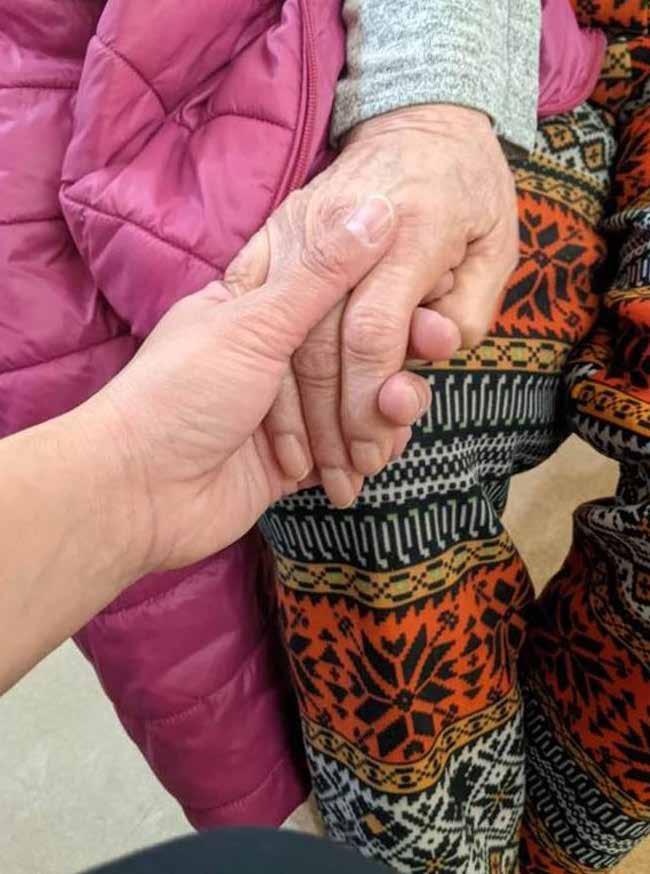
9
© Credit: Danika Littlechild
Keeping track of your family member’s immunizations is important for the health of you and your family. Your records will help to ensure that your nurse or health care provider has the correct information and that you and your children receive the right vaccinations on time.
At your next medical appointment, ask your nurse or doctor for an immunization record. Sometimes you will get a card for each member of your family. Remember to bring this record to every immunization appointment so that it can be updated each time you or your children have a vaccination.
An immunization record may be required when:
• Starting school
• Transferring to another school
• Going to camp
• Receiving health care outside your community
• Travelling outside the country

• Moving to another community
• Having a new nurse or health care provider

If you move out of your province or territory, you will want to make sure that your children complete the series of any vaccines they started and will still receive all other scheduled vaccinations. Once settled in your new location, contact your local health care provider or provincial or territorial public health department for an immunization schedule, and have your children – and yourself – vaccinated according to this schedule.
Life can be very busy. Sometimes things happen and children, youth and adults miss one or more of their scheduled vaccinations. Getting back on track is important. Make an appointment with a nurse or health care provider as soon as possible to catch up on missed vaccines.
DID YOU KNOW?
Most children, youth and adults can be vaccinated, even if they have a cold or mild fever.
© Credit: iStockPhoto.com, ID 483333896
How do we remember which vaccines we had and which ones we need?
Quick checklist for your children’s immunizations
□ Make an appointment
First immunizations may start when babies are 2 months old. Your health care provider will tell you about the routine immunization schedule for your children.
□ Bring your children’s immunization record.
If it is lost, you can ask your health care provider for a new copy.
□ Make the next appointment
Set a date for your children’s next immunization before you leave your health care provider’s office or public health office.
□ Mark the next immunization date on your calendar
Do this as soon as you get home so you won’t forget.
□ Keep your children’s immunization record for the next visit
Put it in a safe place so you can find it when you need it.
Remember, immunization is the safest and most effective way to protect your children’s health and the health of your family and community.
Don’t wait, vaccinate! A Guide to Immunization for First Nations, Inuit and Métis Peoples and Communities

11
© Credit: iStockPhoto.com, ID 627557208
Your community and immunization

Getting the vaccinations that you and your family need on time is good for the health of the whole community. Share the information in this booklet with your family and friends to encourage other parents and caregivers to immunize their children and themselves too.
Healthier and stronger communities
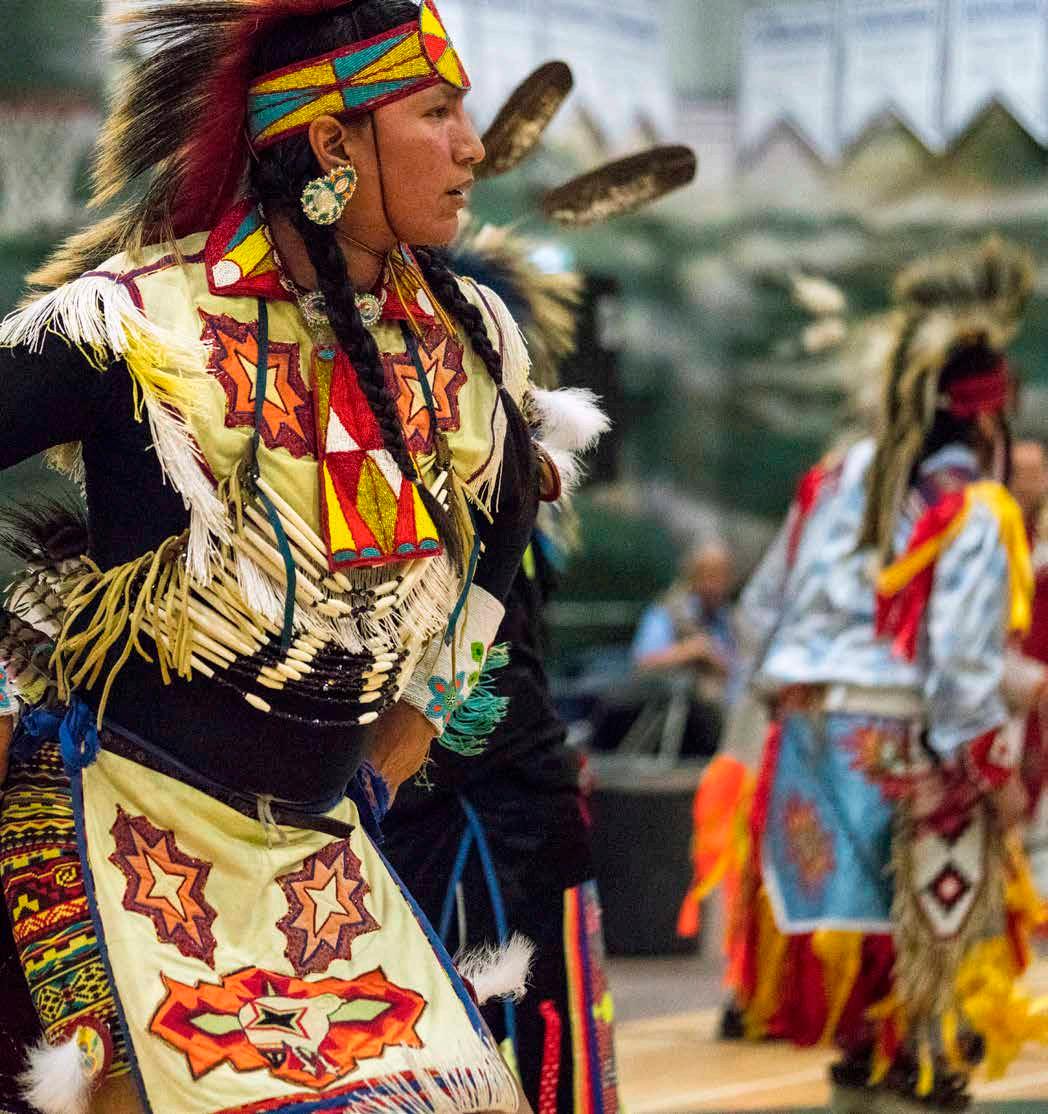
Immunizations not only help protect children from vaccinepreventable diseases, they also help stop the spread of these diseases in the community. This means that by getting immunized, children, youth and adults are helping to protect the members of their community who have not yet been vaccinated or who cannot be vaccinated for medical reasons, including:
• Babies under 2 months old
• Young children who have not received all their vaccines
• Pregnant people
• People with health conditions that weaken their immune system
Most vaccines are recommended in childhood to offer protection from a wide range of diseases. Vaccine-preventable diseases can affect youth and adults if recommended childhood vaccines are missed. It is never too late to catch up on most missed vaccines. Talk to your health care provider about the vaccines you need to keep yourself, your family and your community as healthy as possible.
DID YOU KNOW?
The more people who are immunized in your community, the more protection your community has against vaccine-preventable diseases. This will help keep families and communities healthy and strong.
12
© Credit: iStockPhoto.com, ID 1028895538
What vaccines are recommended for my children?
DPT Vaccine (Diptheria, Pertussis and Tetanus)
Diphtheria
A contagious disease that affects the nose, throat or skin.
Possible symptoms of disease
• Severe sore throat
• Mucus in the throat and nose
• Trouble swallowing
• Wheezing or trouble breathing
• High fever and chills
• Extreme tiredness
• Cough
• Respiratory and heart problems
• General discomfort
Whooping Cough (Pertussis)
A highly contagious airway infection.
Possible complications of disease
• Paralysis
• Suffocation or other breathing problems
• Heart failure or heart damage
• Nerve damage
• Coma
• Death in 5-10% of cases
Possible symptoms of disease Possible complications of disease
• Violent coughing fits that may last for months
• Runny or stuffy nose
• Red, watery eyes
• Fever
• Mucus in the throat
• Vomiting
• Extreme tiredness
• Difficulty eating, drinking
• Trouble chewing, swallowing, and breathing
• Pneumonia
• Convulsions or seizures
• Choking
• Dehydration
• Severe weight loss
• Rib fractures
• Sleeplessness
• Brain damage (1 case per 11,000)
• Death (0.4% among infants)
Don’t wait, vaccinate! A Guide to Immunization for First Nations, Inuit and Métis Peoples and Communities
13
Tetanus (Lockjaw)
A serious and often deadly bacterial infection that affects the nervous system.
DPT Vaccine (Diptheria, Pertussis and Tetanus)
Possible symptoms of disease
• Painful muscle spasms and stiffness in the jaw and neck
• Trouble opening the mouth and swallowing
• Stiffness in the stomach area
• Vocal chord spasms
• Fever
• Excessive sweating
• Increased heart rate and blood pressure
• Full-Painful body muscle spasms
Polio Vaccine
Polio (Poliomyelitis)
A viral infection that attacks the nervous system.
Possible complications of disease
• Broken bones
• Seizures
• Pneumonia
• Suffocation or other breathing problems
• Nerve or brain damage
• Death in 10% of cases
Possible symptoms of disease Possible complications of disease
• Sore throat
• Fever
• Headache
• Nausea
• Vomiting
• Extreme tiredness
• Pain or stiffness in the neck and back
• General discomfort
• Paralysis of arms and legs (1% of cases)
• Breathing problems
• Permanent disability or deformity
• Permanent paralysis (nearly 50% of hospitalized cases)
• Death (5% of hospitalized cases)
14
Hib Vaccine
Haemophilus Influenzae type B (Hib)
A bacterial infection in the nose and mouth that can spread to the blood and other parts of the body.
Possible symptoms of disease
Hib Epiglottitis (severe swelling of the throat):
• Sore throat
• Ear ache
• Fever
• Drooling
• Change in voice
• Bluish colouring of the skin
• Trouble breathing
• Pneumonia
Hib Meningitis (infection of the lining of the brain):
• Fever
• Headache
• Sensitivity to light
• Nausea
• Vomiting
• Confusion, irritability or other changes in behaviour
• Stiffness in the neck and back
Possible complications of disease
• Hearing loss
• Loss of limbs (resulting from bloodstream infections)
• Intellectual and developmental disabilities
• Brain damage
• Epiglottitis (throat infection)
• Pneumonia
• Meningitis (brain and spine infection)
• Septic arthritis (joint infection)
• Cellulitis (skin infection)
• Bacteremia (blood infection)
• Death (5% of meningitis cases)
Don’t wait, vaccinate! A Guide to Immunization for First Nations, Inuit and Métis Peoples and Communities
15
Measles
A viral infection in the respiratory tract.
Mumps
A viral infection that causes swelling in the jaw and cheeks.
MMR Vaccine (Measles, Mumps, Rubella)
Possible symptoms of disease
• Red rash and white spots in the mouth
• Cough
• Fever
• Conjunctivitis (pink eye) or red eyes and swollen eyelids
• Runny nose
• Sneezing
• Watery eyes
• Sensitivity to light
• Loss of appetite
• Tiredness
• General discomfort and feeling of illness
Possible complications of disease
• Ear infection (5-9% of cases)
• Pneumonia (1-5% of cases)
• Convulsions or seizures
• Permanent brain damage (1 case per 1,000)
• Death (1 case per 3,000)
Possible symptoms of disease Possible complications of disease
• Fever
• Headache
• Ear ache
• Swollen glands under the ear or near the jawbone
• Swelling of the cheeks or neck
• Muscle pain or soreness
• Extreme tiredness
• Trouble chewing or swallowing
• Loss of appetite
• Meningitis (10-30% of cases)
• Hearing loss
• Swelling and inflammation of the testicles, pancreas, ovaries, breasts and brain
• Testicular infection
• Ovarian infection
• Miscarriage
16
Rubella (also called German Measles)
A contagious viral infection that causes a distinctive red rash on the face and body.
MMR Vaccine (Measles, Mumps, Rubella)
Possible symptoms of disease
• Pink or red rash
• Fever
• Extreme tiredness
• Redness in the whites of the eyes
• Runny nose
• Headache
• Joint pain or soreness
• Swollen neck glands
• Arthritis (especially in women)
•

Possible complications of disease
Miscarriage
• Malformations or birth defects in infants in cases where mother was infected during pregnancy, including:
° Hearing loss
° Defects of the eye, heart or brain
° Lifelong physical or mental disabilities
• Testicular swelling
• Ear infection
• Encephalitis (brain infection)
• Arthritis (especially in women)
© Credit: iStockPhoto.com, ID 1081648972
Don’t wait, vaccinate! A Guide to Immunization for First Nations, Inuit and Métis Peoples and Communities
17
Varicella Vaccine
Chickenpox (Varicella)
A viral infection that causes red blisters all over the body.
Possible symptoms of disease Possible complications of disease
• Fever
• Headache
• Runny nose
• Extreme tiredness
• Raised pink or red bumps that turn into many small blisters that develop, break and become scabs
• Itching
• Loss of appetite
• General discomfort and feeling of illness
• Ear infection
• Dehydration
• Pneumonia
• Skin infection (e.g. impetigo), sometimes severe (e.g. flesh-eating disease)
• Bone and joint infection
• Encephalitis (brain infection)
• Brain damage
• Toxic shock syndrome
• Birth defects in infants in cases where mother was infected during pregnancy
• Shingles (15-30% over lifetime)
• Death
Meningococcal Vaccine
Meningococcal disease
A serious and often deadly bacterial infection that causes infection in the brain or blood.
Possible symptoms of disease Possible complications of disease
• High fever
• Severe headache
• Nausea and vomiting
• Loss of appetite
• Change in behaviour
• Muscle and joint pain or soreness
• Stiffness in the neck
• General feeling of illness
• Red marks or tiny pin-size hemorrhages or bruises on the skin
•
Seizures
• Meningitis (brain and spine infection)
• Septicemia (blood infection)
• Permanent brain damage
• Amputation of the hands or feet (10-15% of those infected with serogroup C)
• Coma
• Death (10-15% of individuals infected with serogroup C)
18
Pneumococcal Vaccine
Pneumococcal disease Possible symptoms of disease Possible complications of disease
A bacterial infection that can cause infection in the brain, lungs or blood.
• Ear ache
• Sinusitis, stuffy nose
• Pneumonia
• Meningitis (infection of the lining of the brain)
• Bacteremia (blood infection)
• Cough
• Trouble breathing
• Fever
• Headache
• Stiffness in the neck
• Loss of appetite
• Vomiting
• Hearing loss
• Meningitis (brain and spine infection)
• Pneumonia
• Bacteremia (blood infection)
• Permanent brain damage
• Death
Don’t wait, vaccinate! A Guide to Immunization for First Nations, Inuit and Métis Peoples and Communities
19
Hepatitis A and Hepatitis B
A contagious viral infections of the liver.
Hepatitis A and Hepatitis B Vaccines
Possible symptoms of disease Possible complications of disease
• Fever
• Extreme tiredness
• Loss of appetite
• Nausea
• Abdominal pain or soreness in the area around the liver and stomach
• Joint pain
• Dark urine
• Jaundice (yellow colouring of the skin and in the whites of the eyes)
• Vomiting
• Diarrhea or pale coloured stools
• Itching all over the body
• Severe liver disease
• Kidney disease
• Anemia (not enough healthy red blood cells in the body)
• Long-term liver infection (10% of adults and up to 90% of infants)
• Cirrhosis (scarring of the liver)
• Liver cancer
• Death (1% of cases)
20
Seasonal Flu Vaccine
Seasonal Flu (Influenza)
A common virus infection in the respiratory tract.
Rotavirus
A contagious virus that causes severe inflammation of the stomach and intestines.
Possible symptoms of disease Possible complications of disease
• Fever and chills
• Sore throat
• Runny nose
• Sneezing
• Cough
• Chest discomfort
• Extreme tiredness
• Headache
• Muscle and joint pain or soreness
• Nausea
• Vomiting
• Diarrhea
• Metallic taste in the mouth
• General discomfort and feeling of illness
• Ear infection
• Sinusitis
• Bronchitis (inflammation of the airways)
• Pneumonia
• Worsening chronic conditions (asthma, congestive heart failure, kidney failure, respiratory failure)
• Death
Rotavirus Vaccine
Possible symptoms of disease Possible complications of disease
• High fever
• Vomiting
• Severe, watery diarrhea
• Loss of appetite
• Severe dehydration or hypovolemic shock (severe loss of blood or fluids from the body)
• Death
Don’t wait, vaccinate! A Guide to Immunization for First Nations, Inuit and Métis Peoples and Communities
21
HPV Vaccine
Human Papillomavirus (HPV) Possible symptoms of disease Possible complications of disease
A sexually transmitted viral infection that causes warts on the skin and mucous membranes.
• Genital and/or anal warts
• Itching or burning
• Most individuals have no symptoms
• Genital or anogenital warts
• Cervical cancer
• Other cancers (throat, tongue, vulvar, vaginal, penile, anal, head or neck)
• Warts or lesions on the tongue, tonsils, soft palate or in the larynx or nose
• Death
Shingles Vaccine
Shingles (Herpes Zoster)
A painful disease in adults caused by the reactivation of the varicella-zoster virus, the same virus that causes chickenpox.
Possible symptoms of disease Possible complications of disease
• Prolonged itching, tingling, burning or pain in a specific area of the body or face
• Blistering rash
• Headache
• Fever and chills
• Extreme tiredness
• Nausea
• Swollen lymph glands
• General discomfort
• Chronic severe pain
• Pneumonia
• Hearing loss
• Loss of sight
• Encephalitis (brain infection)
If you are planning to travel outside of Canada, talk to your nurse or health care provider about any vaccines you may need for your travel destination.
22
Is there more information out there?
Many people talk about the benefits of vaccines and immunization. If you have questions about immunizations or vaccine-preventable diseases, there are a number of trusted sources you can turn to for answers, including nurses, doctors or local health care providers in your community. You can also contact your provincial or territorial public health department for more information about immunization schedules and services.
Here are some web sites to find more information about vaccines and immunization:
Canadian Paediatric Society: https://cps.ca/en/clinical/immunization-and-vaccines
Health Canada www.healthcanada.gc.ca/vaccinate
Indigenous Services Canada: Vaccinations for First Nations and Inuit www.sac-isc.gc.ca/eng/1581522307599/1581522348005
Public Health Agency of Canada www.publichealth.gc.ca/immunization
Immunize Canada www.immunize.ca CANvax www.canvax.ca
The CARD system (Comfort, Ask, Relax, Distract) https://www.aboutkidshealth.ca/card
Reduce the Pain of Vaccination in Kids and Teens: A guide for parents https://caringforkids.cps.ca/uploads/handout_images/ painreduction_kidsandteens_e.pdf
Don’t wait, vaccinate! A Guide to Immunization for First Nations, Inuit and Métis Peoples and Communities
23



ᖃᐅᔨᒃᑲᐃᖃᑎᒌᓃᖅ · ᐱᕚᓪᓕᖅᑎᑦᑎᓂᖅ sharing knowledge · making a difference partager les connaissances · faire une différence 1 250 960-5250 NCCIH@UNBC.CA NCCIH.CA FOR MORE INFORMATION: UNIVERSITY OF NORTHERN BRITISH COLUMBIA 3333 UNIVERSITY WAY, PRINCE GEORGE, BC, V2N 4Z9











 © Credit: Tina Campbell
© Credit: Tina Campbell














